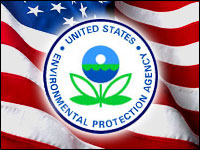
The Obama administration once again has trained its spotlight on climate change. The Environmental Protection Agency this week announced a plan to cut carbon pollution, a leading cause of climate change, by an average of 30 percent nationwide by 2030, compared with 2005 levels. Power plants account for 40 percent of carbon pollution, the biggest driver of climate change.
The new regulations would allow the U.S. to combat climate change while supplying the country with a reliable, affordable power source, the EPA said.
A White House report last month, based on input from 300 experts, underlined the threat posed by climate change.
First-Time Measures
This marks the first time a president has moved to regulate power plants’ carbon emissions. The new rules will help prevent as many as 6,500 premature deaths and up to 150,000 child asthma attacks, the administration claimed.
Still, they are not as strict as some environmental groups had hoped for. Some states, particularly in the Northeast, already have surpassed the new standard by dropping emissions up to 40 percent, The Guardian noted, while the U.S. as a whole is a third of the way toward meeting the target, partly as a consequence of the economic crisis and a shift from coal to natural gas.
Coal industry lobbyists, meanwhile, claimed the regulations would lead to power outages and damage the economy.
The regulations would cost the economy US$51 billion and make 224,000 people unemployed, according to the Chamber of Commerce.
However, based on EPA estimates, the move would create tens of thousands of jobs.
Executive Powers
The EPA announcement comes just as politicians enter the mid-term election season, and it now appears likely that the environment will be a key political issue. President Barack Obama previously had planned to steer climate change action through Congress. However due to House Republicans’ staunch opposition to cutting carbon emissions, the president invoked executive authority to deal with the issue.
The new measures could affect 1,600 power plants, around 600 of which run on coal. Many of them are almost a half-century old, and bringing them up to the required standards may pose severe challenges.
States have until 2016 to put a strategy in place for meeting the targets, though rules may not come into effect fully until 2020. Power companies and states have a range of options to tackle emissions, including switching to natural gas, expanding renewable energy sources like solar and wind power, and assisting customers in using less energy.
Carbon Capture And Storage
The technological challenges in reducing emissions may prove significant. Coal currently produces 40 percent of the world’s electricity, noted Wired.
Attempts at developing a technology called “carbon capture and storage” — which allows plants to burn as much coal as before but with the pollutants removed — are under way. With this processs, ash and soot are taken out, while carbon dioxide is extracted and pumped to underground storage areas where the gas can remain for thousands of years.
The technology, however, may prove difficult to implement widely.
“There are some small-scale project that have been funded,” Atul Jain, atmospheric sciences professor at University of Illinois at Urbana-Champaign, told TechNewsWorld. “On a smaller scale, they’re very successful, but I doubt there are any long-term or big projects that have been funded or carried out that can help us to solve our climate change problem.”
Even where such methods have been established, there are risks to carbon storage because of natural disasters. Should there be an earthquake of significant magnitude, Jain suggested, that stored gas may reach the atmosphere regardless of protective measures.
Multi-Pronged Approach
A multi-pronged approach to carbon emissions, including technological solutions, is likely the most effective option for reaching the target.
“Far and away, the most important [thing] is to stop burning so much fossil fuel,” Thomas J. Duck, a professor in the physics and atmospheric science department at Dalhousie University, told TechNewsWorld.
Solar, wind, and hydro are increasingly viable options, he suggested.
“Any strategy we have is going to have to involve a whole variety of measures in order to work,” Duck said.
“Decarbonizing is crucially important. Carbon capture and storage maybe has a role — it’s hard to say what that role is at this point. Efficiency has a huge role to play; there are a lot of gains that could be made through efficiency. … We know that in order to keep climate manageable, we’re going to have to apply a whole range of things,” he observed.
“Technology has its own limitations,” Jain pointed out. “We have not yet found any new technology that can help us to sequester carbon. There are a number that have been proposed … but none of the technologies can solve the problem unless we take some mitigation actions.”





















































